The human body is constantly exposed to external hazards. This is a different kind of disease, infection and so on. One of the most common and serious problems is parasites. They penetrate the body completely unnoticed, the consequences can be very serious. It is important to know which parasites are most dangerous in the human body and what health threats they pose. You can see the parasites in detail in the photo.
Different worms live all over the world. They are all divided according to the type of transmission and type. Parasitic worms are mainly transmitted to humans in the following ways:
- infected person;
- animals;
- soil, food, water;
- insect bites.
Worms are divided into different types:
- leeches;
- round;
- band.
worms are a very large class of parasitic worms that live in plants, animals, and humans. They can live in hollow organs, thicker tissues, and the tissues themselves.
Top 10 most dangerous parasites in the human body
- Schistosomes are dangerous parasites from tropical waters.
- Rishta is a worm that lives under human skin.
- Filariae are dangerous parasites of elephantiasis.
- Echinococcus are dangerous larvae in the body.
- Whiskered Vandellia is a fish parasite.
- Roundworms are known to all worms.
- Beef tapeworm is a very large and long worm.
- Ankylostoma is a small harmful worm.
- Broad tapeworm - danger to the human intestine.
- Pork tapeworm is a dangerous disease.
Schistosomes - live in venous blood
The parasite's second name is leeches. Infection occurs through the skin, contact with contaminated water. The disease caused by schistosomiasis is called schistosomiasis.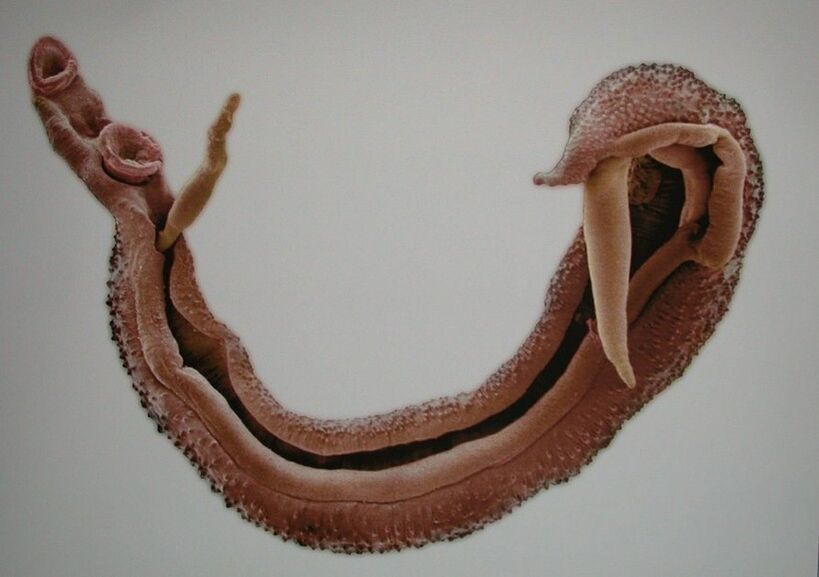 They differ from other helminths in their habitat: They live and multiply in the venous system. Most common in South America, Africa, the Middle East, and Southeast Asia. They are not large, 2. 6 cm in length and 0. 6 mm in diameter, which can be clearly seen in the photo. A person realizes that they are infected with the following symptoms:
They differ from other helminths in their habitat: They live and multiply in the venous system. Most common in South America, Africa, the Middle East, and Southeast Asia. They are not large, 2. 6 cm in length and 0. 6 mm in diameter, which can be clearly seen in the photo. A person realizes that they are infected with the following symptoms:
- intestinal disease;
- enlarged lymph nodes, spleen.
But the symptoms are different, everything depends on the part of the body where schistosomes have accumulated:
- nervous system - disorientation, memory loss, headache;
- Inflammation of the bladder organs, blood in the urine, abdominal pain;
- liver - ascites, organ enlargement, spleen;
- intestines - diarrhea, polyps.
Eggs of worms are very dangerous, they pierce, damage the walls of lymph and blood vessels of various organs and tissues. In this way, parasites can even get into the uterus, lungs, prostate, and stomach. Worms, eggs clog blood vessels, which leads to the formation of varicose veins, tumors and cysts. Helminths of this type can cause serious problems, including bladder cancer, liver cancer, prostate cancer, and liver fibrosis. To avoid infection with the most dangerous parasites in the human body, it is very important to avoid swimming in tropical waters, wash vegetables, fruits and hands well before eating. Schistosomiasis can be cured conservatively if treatment is started on time. If there are complications, operations are carried out.
Rishta - subcutaneous worm
Dracunculiasis is a disease caused by this type of parasite in the human body. The infection occurs through the dirty water of tropical reservoirs in Asia and Africa. Usually humans are infected, but there are cases when dogs are infected.
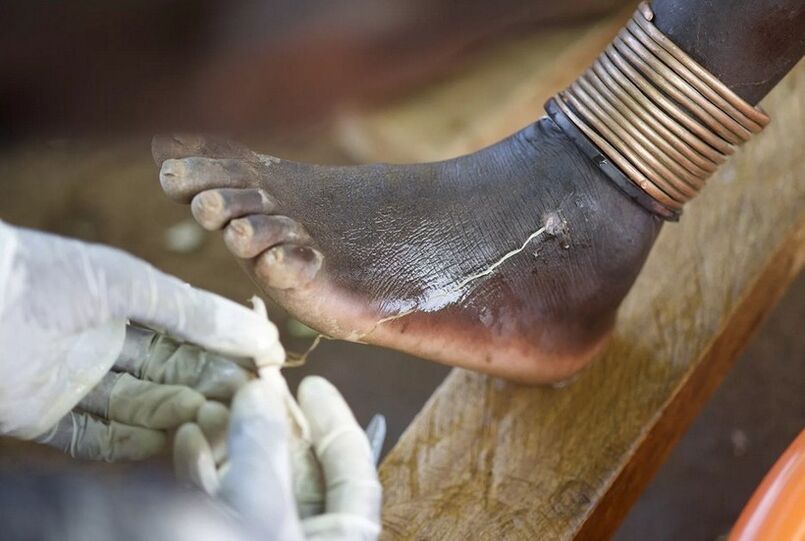
When swallowing contaminated water, the worm penetrates the human body, where copepods live - carriers of the larvae of the Rishta. Treatment only through surgery. A secondary infection of already injured skin is very dangerous.
Once in the body, the rishta literally gnaws through the tissue, the intestinal walls, lives in the lymph vessels and subcutaneous fat. The worm can grow up to 80 centimeters in length. Severe abscesses appear in the areas of the body where the rishta are located, and parasites can be found in them. The disease is only caused by women, men die after mating. When an infected area of skin comes into contact with water, the female worm goes out a short distance and throws its larvae into the water. These larvae must be caught by copepod crabs to survive.
Filariae is a very dangerous parasite for the body
Another name for the worm is filamentous. Of all the species, about 10 preferred people lead to filariasis. They were called thread because of their appearance, the worms are very thin, like a thread, you can see that in the photo. They are 0. 3 cm in diameter, but grow up to 50 cm or more in length. After they hit the body, they live in the subcutaneous tissue, body cavity, heart, blood, lymphatic vessels, and every part of the body. Very common in hot countries.
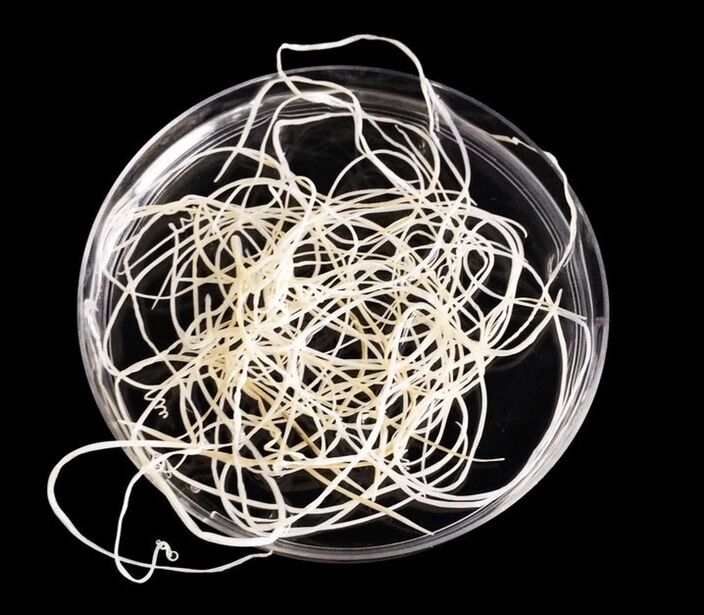
They are transmitted by blood-sucking insects, sometimes by ticks, which in turn are infected by the blood of an infected animal, a human. The danger lies in the fact that the most terrible worms can be recognized, when the disease has become chronic, it is almost impossible to cure it. Filarias buildup block the lymphatic system, clog blood vessels, and cause elephantiasis. The patient's legs become large, excessively swollen, up to the inability to move, there are a lot of photos of people with this disease on the Internet.
Echinococcus is a great danger to humans and animals
This tapeworm lives in the intestines of dogs, wolves, rarely cats and can easily be transmitted to humans.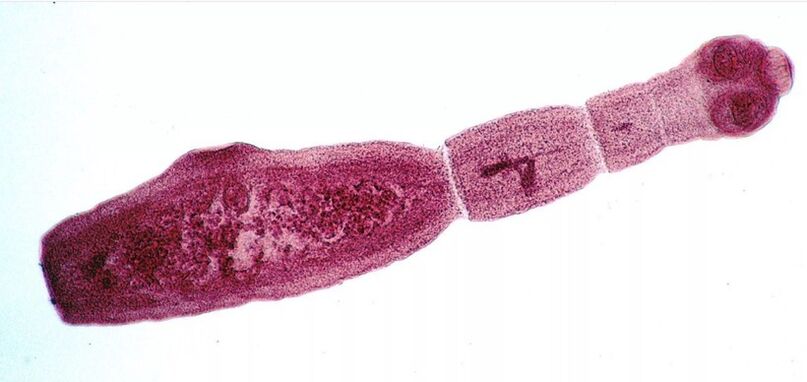 Echinococcus larvae are one of the most dangerous and cause echinococcosis. An adult worm is 3 to 5 mm long. In the photo describing the parasite, it can be clearly seen that it has a head with suction cups, hooks and segments. Eggs come out of the body of dogs with feces and sometimes get on the wool.
Echinococcus larvae are one of the most dangerous and cause echinococcosis. An adult worm is 3 to 5 mm long. In the photo describing the parasite, it can be clearly seen that it has a head with suction cups, hooks and segments. Eggs come out of the body of dogs with feces and sometimes get on the wool.
Infection from farm animals is also possible. Infection in humans occurs through the mouth and eats contaminated meat and saliva from dogs. The larvae continue to penetrate the body, through the blood they get to the liver, where they live and multiply. Rarely go into bones, muscles, lungs. During development, echinococci transform into large bubbles the size of a child's head. Depending on the neglect of the disease, treatment is carried out with drugs or promptly by removing the tissues of the organ along with the bubbles of the larvae.
Whiskered Vandellia - the smallest and most terrible
In general, this creature belongs to fish, but it is one of the most dangerous to the body. People are afraid of her because while bathing, an almost see-through, small, 15 cm long creature can easily enter the urethra, genitals and anus. Then Vandellia is attached to the vessels and feeds on blood. Unfortunately, the only way to get rid of the parasite is through surgery.
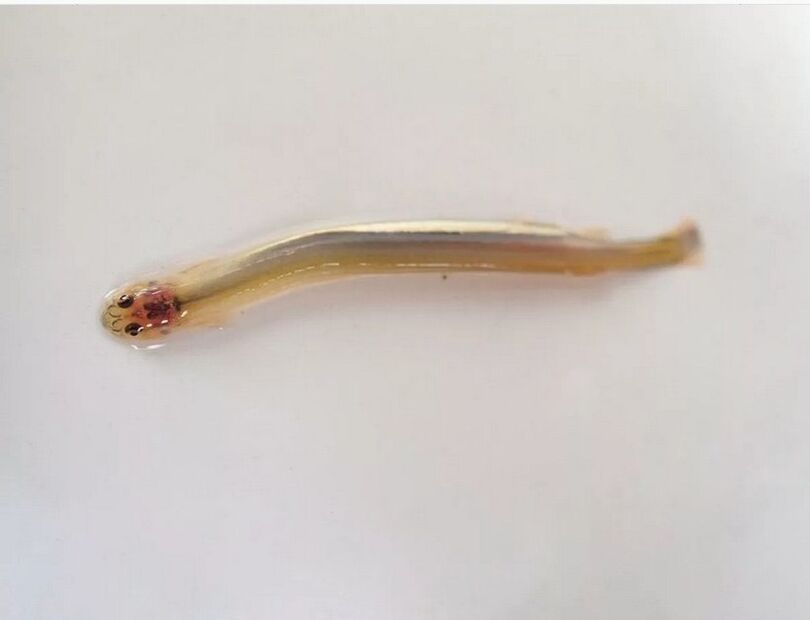
Ascaris - the most famous worm in the human body
The parasite is widespread and is common in the human body. If the eggs of a human roundworm fall into the ground, they can be stored there for almost a year until they are in a favorable environment. In the body, it releases toxins that affect the liver and lungs. Ascaris does not stop in one place, it constantly migrates through the body, affecting blood vessels and causing inflammation.
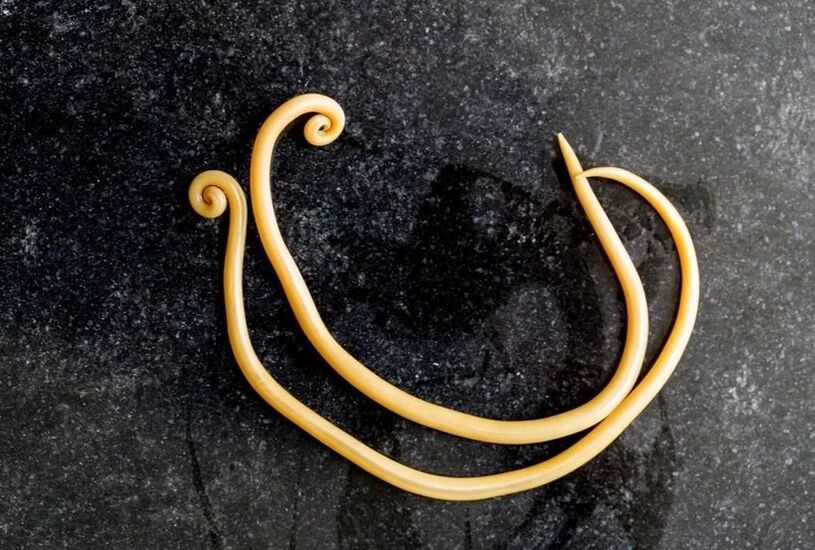
The main habitat of the most harmful worm is the intestine, where the parasites comfortably live and eat the food that the infected person eats. They can get into the pancreas, bile, and liver, reach the esophagus, and block breathing. A roundworm lays up to 1, 000 eggs a day. They become quite large and up to 30 cm long.
Bull tapeworm is the largest and most dangerous worm
This very large parasite lives in the small intestine, the photos of the tapeworm are just amazing. The body of the tapeworm consists of a head with suction cups, a large number of segments ranging from 2, 000 to 5, 000. The length of the worm increases steadily as it grows, up to 10 meters. In the human body it can live up to 20 years without treatment. It produces around 600 million eggs a year, up to 11 billion per life cycle.
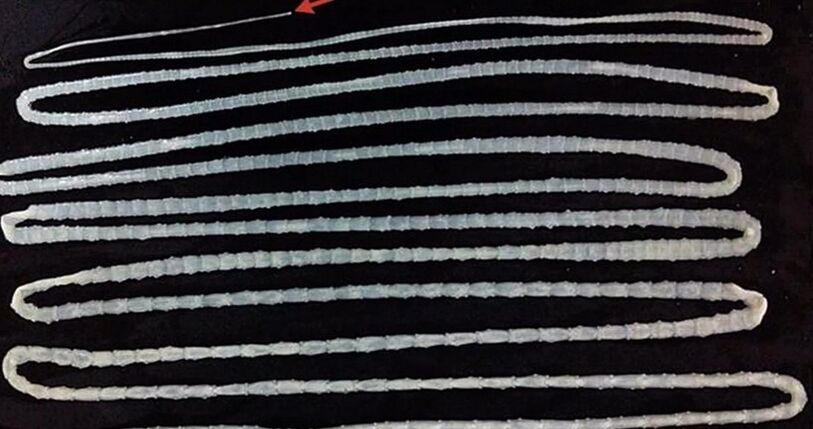
Lives only in the small intestine of an animal, a human. The intermediate host through which a person becomes infected is livestock. Infection occurs through poorly processed, cooked, or raw meat, milk, fish, and contact with pets.
Hookworm - a noxious, dangerous worm
The worm is very common in East Asia, Africa and causes hookworm diseases. The parasite lives in the human duodenum, does not grow large, a maximum of 14 mm. Infection occurs through dirty hands, vegetables, fruits, even through the skin while working with the soil. When you walk barefoot on the grass, the larvae invade the skin.
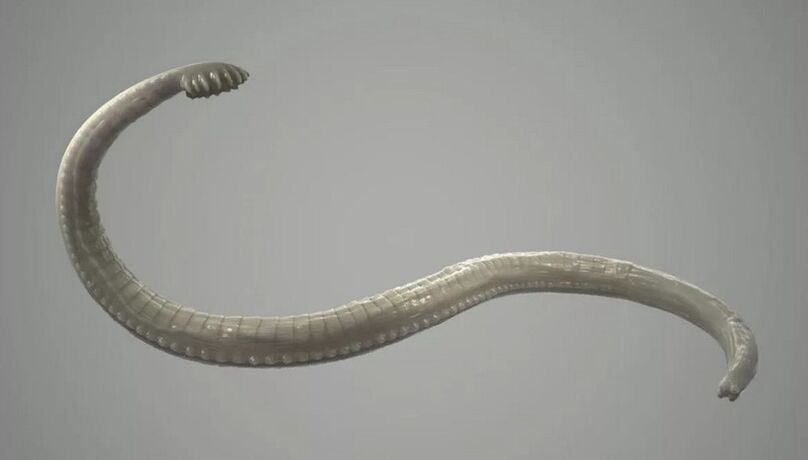
As soon as it is in the body, it enters the blood vessels and from there to the liver, heart and lungs. Ankylostomosis leads to serious complications, especially hepatitis, ulcers.
Wide band - a dangerous parasite with a large long body
An infection with this worm occurs through fish when a person has eaten raw, poorly cooked fish, raw pike caviar, or has been busy processing infected fish and seafood.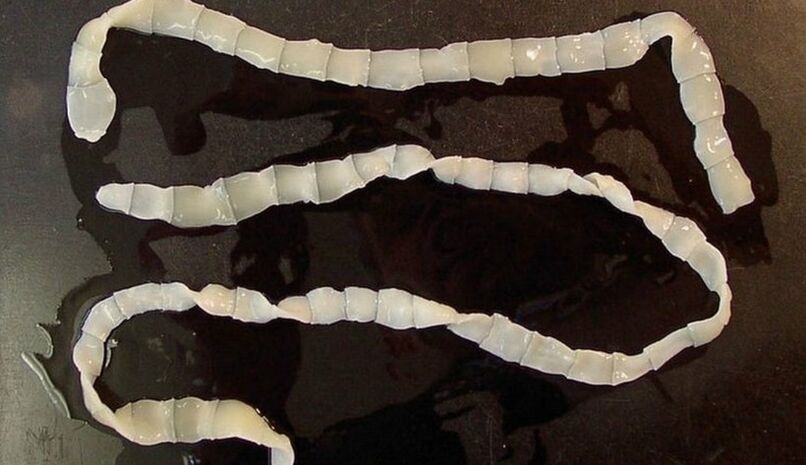 A dangerous tapeworm can grow up to 15 meters long, it is very large, the body consists of a large number of segments - up to 4, 000, on the head there are suction cups with which the worm is attached to the intestine. Looking at the photo of the worm, it's just hard to believe that it can live in a person. The larva develops in just a month. Wide tapeworm leads to a serious disease - diphyllobothriasis.
A dangerous tapeworm can grow up to 15 meters long, it is very large, the body consists of a large number of segments - up to 4, 000, on the head there are suction cups with which the worm is attached to the intestine. Looking at the photo of the worm, it's just hard to believe that it can live in a person. The larva develops in just a month. Wide tapeworm leads to a serious disease - diphyllobothriasis.
The patient has a severe vitamin deficiency because the worm feeds on all the nutrients in the body. Its whole large body absorbs substances on its surface. The necrosis begins where the tapeworm sucked. The most dangerous tapeworm can live in the human body for up to 10 years.
Pork tapeworm is a very harmful worm of the human body
This worm can be mistaken for a beef tapeworm, but it does not grow that big and is a maximum of 3 meters long. There are also fewer segments on the body, up to 1, 000. There are suction cups, a proboscis with hooks, on the worm's head. The tapeworm is thus attached to the intestinal walls. It is rooted in the body of pigs, rabbits, hares, dogs, camels and thus gets to the person - the final owner. Infection is allowed through the use of raw bacon and meat. It is very dangerous for eggs to enter the human body, as they become an intermediate master and the stage of the Finns occurs in it, which often leads to the most serious diseases and death.
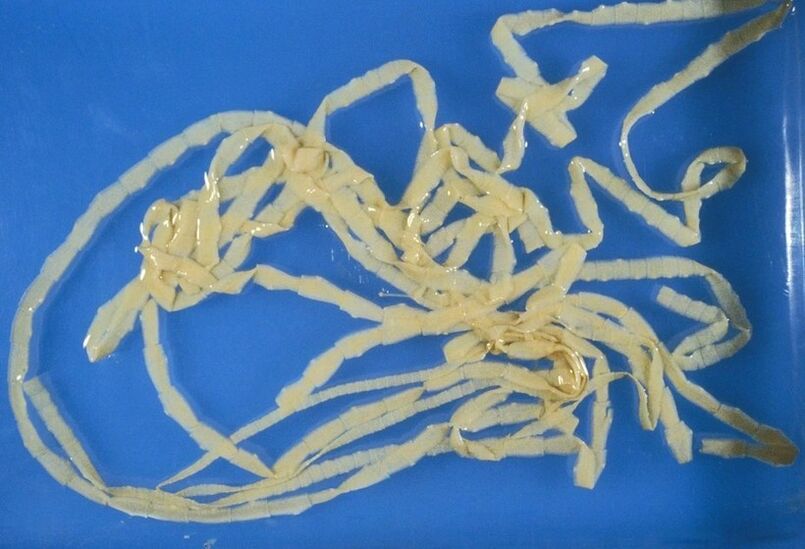
Helminths cause diseases such as cysticercosis and teniasis. If there are a lot of parasites, they clog the intestines, which is why the patient urgently needs surgery. They can penetrate the intestinal walls, enter the lymphatic vessels and internal organs. Disease complications lead to damage to subcutaneous tissue, muscles, skin, spinal cord, brain, bones and internal organs. The most important thing is to do prevention and carefully process the meat before consuming it. A person needs to observe personal hygiene and the prevention of helminthiasis.








































